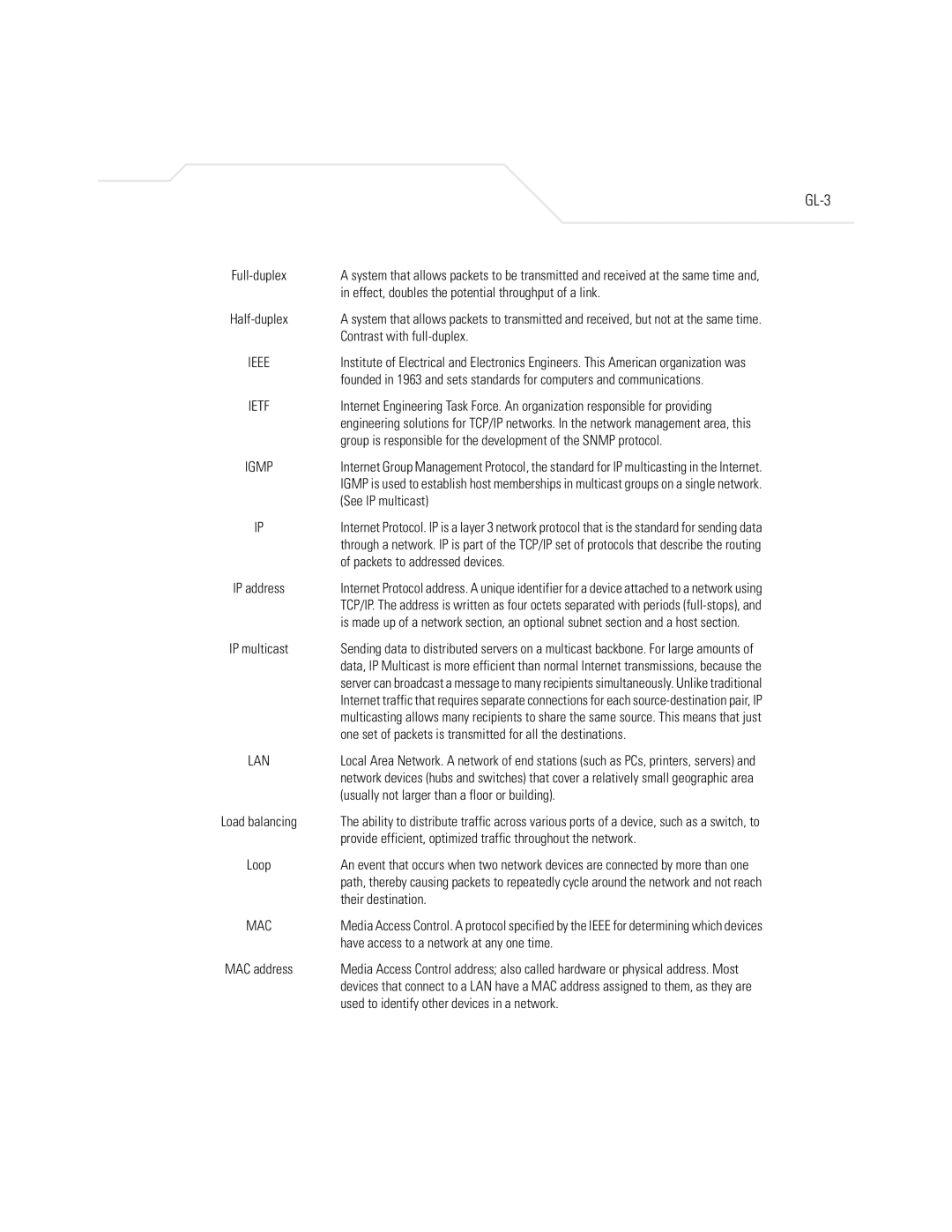
GL-3
A system that allows packets to be transmitted and received at the same time and, | |
| in effect, doubles the potential throughput of a link. |
A system that allows packets to transmitted and received, but not at the same time. | |
| Contrast with |
IEEE | Institute of Electrical and Electronics Engineers. This American organization was |
| founded in 1963 and sets standards for computers and communications. |
IETF | Internet Engineering Task Force. An organization responsible for providing |
| engineering solutions for TCP/IP networks. In the network management area, this |
| group is responsible for the development of the SNMP protocol. |
IGMP | Internet Group Management Protocol, the standard for IP multicasting in the Internet. |
| IGMP is used to establish host memberships in multicast groups on a single network. |
| (See IP multicast) |
IP | Internet Protocol. IP is a layer 3 network protocol that is the standard for sending data |
| through a network. IP is part of the TCP/IP set of protocols that describe the routing |
| of packets to addressed devices. |
IP address | Internet Protocol address. A unique identifier for a device attached to a network using |
| TCP/IP. The address is written as four octets separated with periods |
| is made up of a network section, an optional subnet section and a host section. |
IP multicast | Sending data to distributed servers on a multicast backbone. For large amounts of |
| data, IP Multicast is more efficient than normal Internet transmissions, because the |
| server can broadcast a message to many recipients simultaneously. Unlike traditional |
| Internet traffic that requires separate connections for each |
| multicasting allows many recipients to share the same source. This means that just |
| one set of packets is transmitted for all the destinations. |
LAN | Local Area Network. A network of end stations (such as PCs, printers, servers) and |
| network devices (hubs and switches) that cover a relatively small geographic area |
| (usually not larger than a floor or building). |
Load balancing | The ability to distribute traffic across various ports of a device, such as a switch, to |
| provide efficient, optimized traffic throughout the network. |
Loop | An event that occurs when two network devices are connected by more than one |
| path, thereby causing packets to repeatedly cycle around the network and not reach |
| their destination. |
MAC | Media Access Control. A protocol specified by the IEEE for determining which devices |
| have access to a network at any one time. |
MAC address | Media Access Control address; also called hardware or physical address. Most |
| devices that connect to a LAN have a MAC address assigned to them, as they are |
| used to identify other devices in a network. |
